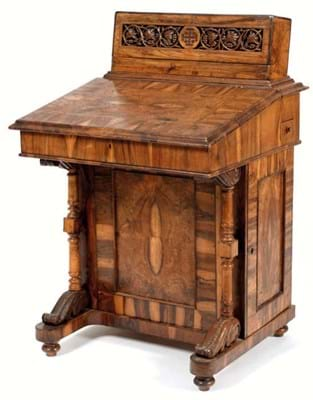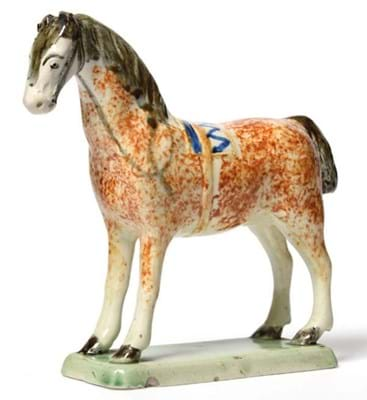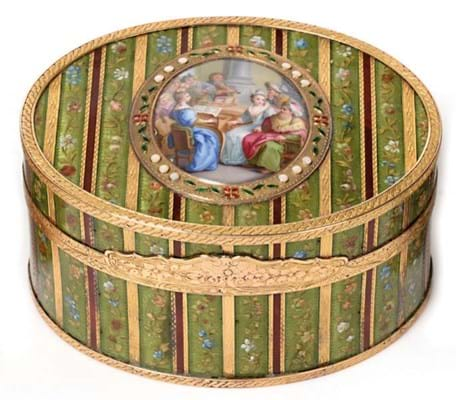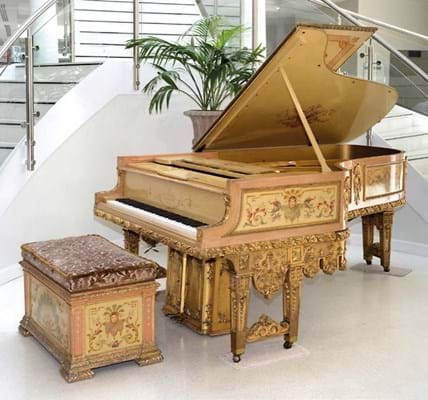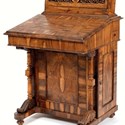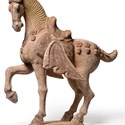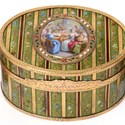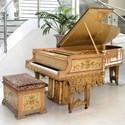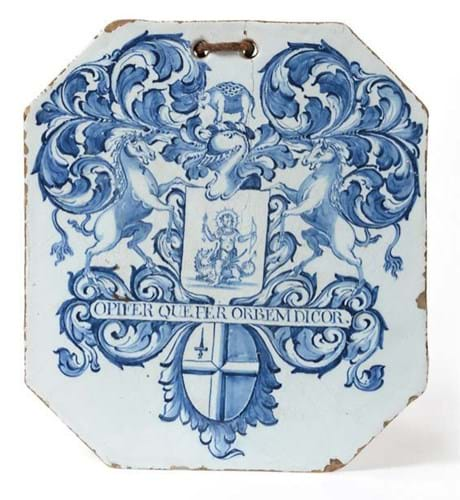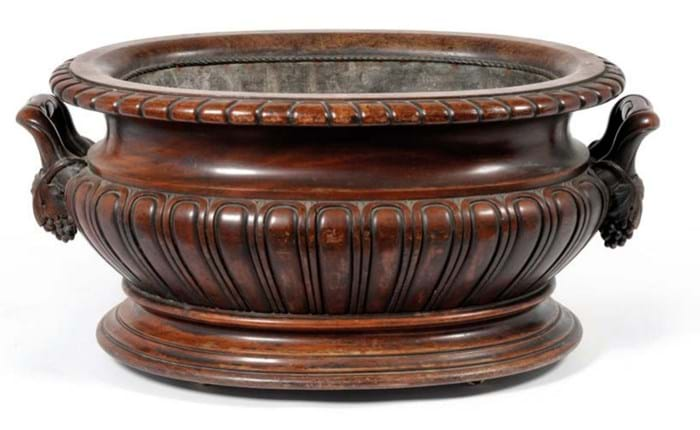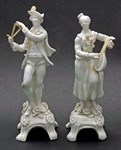On the figures alone – 83% of the 987 lots got away, bringing a hammer total of £1.1m – the July 15 sale provided comforting evidence that life goes on after the Brexit referendum of June 2016.
“The saleroom had never been busier,” said auctioneer Jeremy Pattison.
Paintings and jewellery boosted the total, as did the day’s top seller, a 1928 Louis XIV-style Steinway concert grand.
In a cream and polychrome case painted with musical trophies and floral swags raised on a gilt gesso base, it was offered with a matching stool and sold to a UK private buyer comfortably above estimate at £36,000.
More familiar territory, however, also proved fertile.
Furniture
“This sale saw the strongest results for traditional ‘brown’ furniture that the saleroom has had in recent years,” said Pattison.
Private UK buyers dominated. A 17th century oak three-drawer dresser quadrupled the mid-estimate at £3400; a set of eight c.1810 mahogany and boxwood-strung dining chairs estimated at £800- 1200 sold at £5000 and a late George III mahogany free-standing waterfall bookcase estimated at £600-800 sold for £4000.
The bookcase, with four graduated tiers raised on a stand, was provenanced to Aldbrough Hall, a country house near Richmond which provided other good sellers.
Among them was a handsome early 19th century mahogany wine cistern.
The 3ft 3in (1m) wide oval gadrooned body with vine and leaf carved handles was raised on a plinth base with recessed castors. It had some splits and the lead lining had some damage but, against a £700- 1000 estimate, the cistern sold to the UK trade at £7500.
Prices for once-popular davenports have fallen substantially and the £400 which secured a late Regency rosewood example backed that observation.
However, a piano-top, burr walnut and stamped Maple & Co c.1870 justified hopes of £2000- 3000 to sell at £2300 and a bid of £4400 emerged for a foliate carved example from the same period. It was unusually in Jerusalem olivewood, a material generally used sparingly for small pieces such as carved pens and boxes. Estimated at £500-700, it sold to a private buyer.
The elaborate marquetry inlaid davenports produced in Killarney, Ireland, for the tourist market have also bucked the downward trend. Another familiar piece produced by the Irish craftsmen at this time was the inlaid arbutus and yew folding-top games table. The example in Leyburn, featuring an oval panel depicting Muckross Abbey to the top, doubled the mid estimate selling to an Irish buyer at £5000.
Ceramics and glass
Candidate for the rarest offering among the ceramics was a c.1740 London delft pill slab. Measuring 10½ x 9½in (27 x 24cm) it was painted in blue with the arms of the Apothecaries Company, a motto and the City of London arms.
It suffered from a hairline crack from the suspension hole to the centre and some glaze chips but sold on its top estimate of £6000 to a UK collector.
Models of horses illustrated on these pages made perhaps 1000 years apart found ready buyers.
One was a 6in (15cm) tall c.1810 Pratt-type figure, possibly made at the St Anthony pottery in Newcastle, which more than doubled the top estimate, going to a collector at £2200. The other was a Tang pottery horse, one of hundreds of thousands made across the dynasty (618-906AD) – and one of thousands exported from Hong Kong in the 1990s.
Tennants July 15 Summer Sale
A flood of fakes has added to the collapse of the market in run-of-the-mill examples and today genuine Tang horses can sell in three figures. The 20½in (52cm) tall offering at Tennants, sold with an Oxford authentication certificate, did rather better than that. Estimated at £2000- 3000, it sold to the trade at £4000.
The outstanding piece of glass was an 11½in (29cm) 1928 Salmonides design engraved R Lalique France, which had some minor chips but went over hopes at £6500.
Silver and gold
Traditional material living up to, and going beyond, expectations included a 14oz sugar box by James Mitchellsone, Edinburgh 1725, and an elaborate 246oz five-light early Victorian candelabrum.
The 4¾in tall (12cm) sugar box, engraved with a crescent moon and motto took £5800, and the 2ft 8in (80cm) tall candelabrum by Edward, Edward Jnr, John & William Barnard, London 1842, sold for £7800.
The surprise was a c.1900 Arts & Crafts white metal casket.
Apparently unmarked, the 6¾in (17.5cm) wide casket featured enamelled copper panels to the sides depicting the months of the year with a proverb for each and, to the cover, two children by a pond.
It had some faults, including lifting to the cedar wood lining, but one foot had been tested as silver and the casket took a 10-times top estimate £5000.
Two continental snuff boxes, each with minor condition problems, went comfortably above hopes.
A vari-colour gold 2¾in (7cm wide) oval box set with enamelled reserves of putti, probably Geneva c.1780, with the maker’s mark DMC, sold for £8500. A Paris 1759-60 oval enamelled gold-mounted and tortoiseshell box, with a painted plaque of a music recital to the 3½in (9cm) wide cover, took £7800.
Horology
There was no shortage of 19th century small clocks making low four-figure prices but, as so often, none of the perfectly decent longcases could make more than around £2000. Instead, a trio of notable makers of longcases was represented among the watches
One was a c.1710 gold repeating watch signed to the dust cover and gilt fusee verge movement Daniel Quare, London, No.654. The inner gold case was stamped with case maker’s mark WI for William Jaques and, again, numbered 654, but the second of its three cases was missing. It sold on the lower estimate at £3000.
A c.1750 gold repousse pair-cased watch signed John Ellicott, London, No.073 was deemed a better survivor. The gilt fusee verge movement needed cleaning, and the repeat mechanism was not working but the watch took a top-estimate £5000.
The third pocket watch of note was from the 19th century – an 18ct gold chronometer, 2in (5cm) wide, in its original mahogany deck box with an ivory plaque signed Dent, Watchmaker to the Queen, London, No.6099, 1842. The gilt fusee movement, also signed and numbered, was in working order and against a £3000-4000 guide the chronometer sold at £6000.


